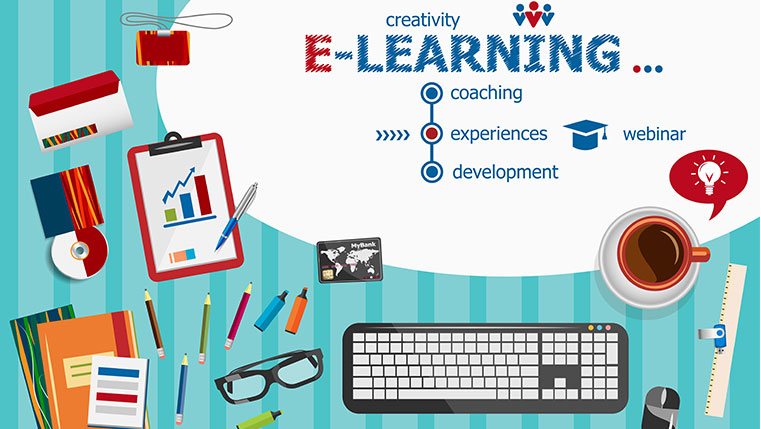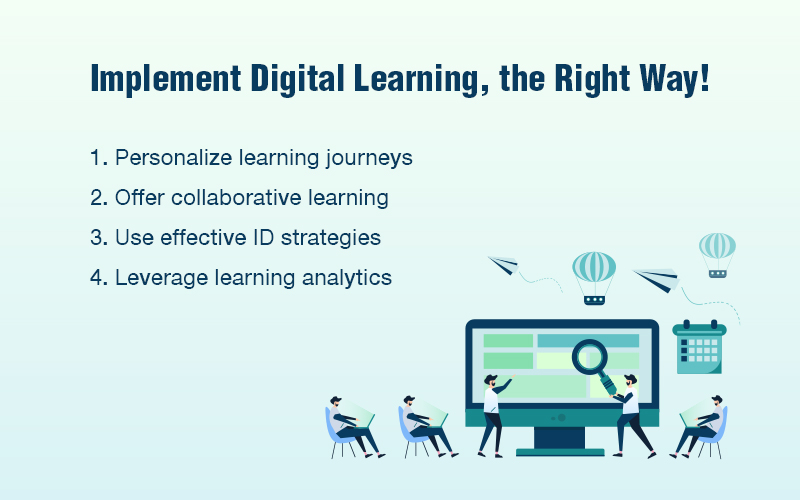15 E-learning Tips to Design Effective E-learning Courses

ELearning is an exciting option for both learners and trainers. It saves time, resources, and cost apart from being portable and easily translatable. One must remember that eLearning can be made to match (or exceed) the traditional method of classroom teaching by considering certain factors while designing the course.
→ Download Now: State of Learning (Now and Beyond) [eBook]
In this post, there are 15 tips from industry experts that will help designers create better engaging and effective result oriented e-courses.
Tip 1: Consider the learners’ knowledge level
The course taker can be a beginner or be proficient in that topic. Keep the varying levels of learners’ expertise on the course content in mind while designing the course. Provide options to skip a specific slide or page in case the learner does not intend to go through it or if they already know the same. Add interactivities that give the learner a chance to learn more or skip a given topic.
Tip 2: Be watchful of slide elements
As a designer, you may have some preferred ideas about colors, slide layouts, interactivities, fonts, images, icons, etc. However, check if they really suit the given content. Colorful fonts, designs, and images can be awesome or disastrous. Go for minimalistic, professional, and globally accepted, yet engaging ideas regarding the same.
Tip 3: Visualize content clearly
In the initial stage of going through the content given by the Subject Matter Expert (SME), visualize each and every topic clearly, before putting it on the storyboard. If you can’t do that for any topic, don’t go ahead with it. Research more on it, clarify with the SME, and only then proceed with visualizing it in the storyboard. By doing so, you are ensuring the learner will definitely understand that particular topic.
Tip 4: Provide references, tools, and resources for further study
Remember that physical interaction with the trainer is not available in eLearning, however engaging the course might be. Therefore, provide glossary, relevant sources, references, and tools for further research, in case the learner has doubts and wants to learn more about any topic. This gives confidence and satisfaction to the learner.
Tip 5: Inform learners of the technical requirements
Prepare the learner prior to taking the course. Inform about the technical requirements such as browser compatibility, operating system, and other software required. If the course has audio, it is not wrong to display a message to check the headphones or audio system before starting the course. It is also a good practice to show the slide progress, duration of the course, and the learner’s current progress with respect to the total course. Providing navigational features to navigate through the course will help the learner access the course with ease.
Tip 6: Ensure consistency
The usage of too many formats for slides/screens and too many/different interactivities might confuse the learner. When proceeding to the next slide, don’t surprise the learner with an entirely different theme or layout. Maintain consistency in colors, fonts, and themes to put the learner at ease.
Tip 7: Provide ample scope to practice
Feeding learners information may not be useful always. Instead, design assessments that will give the learner a chance to apply the knowledge obtained so far. Frame questions to check the practical application of the theory learned and see that the learner thinks, gets involved, and solves the given question.

A Bird’s Eye View of What Top-Performing L&D Teams are Doin
- Aligning Learning Strategy with Business Strategy
- Developing Business Skills for the Future
- Investing in the Right Technology
- Much More
Tip 8: Make your course visually appealing
If you want to drive a point which has lot of text, try using a suitable image that is self-descriptive. This visual supplement will make things easy for the learner and will help him understand the topic better.
Tip 9: Engage the learner till the end
There is a lot of scope for the learner losing focus from the course at some point, especially if the course duration is long. It is a good practice to engage the learner through interactive knowledge checks that can be incorporated while proceeding to another topic. Frame engaging formative assessments that will grip the learner and help them move forward with more enthusiasm.
Tip 10: Content first
Content is the basic skeleton of a course. Technology is only an additive. Ensure the content is proper, to the point, and easy for the learner to understand. Use technology only as a support, but don’t make it a priority in the course.
Tip 11: It’s not wrong to be creative
If you can think out of the box while designing a course, you are most welcome to go ahead. Let your creativity flow and this will help provide a course with a “fresh” appeal to the learner. However, do keep in mind the thin line between being novel and weird.
Tip 12: Align assessments with learning objectives
Learning objectives should be designed so that the learner is satisfied the course will definitely fulfill his knowledge needs. Frame assessments such that they are in alignment with the learning objectives. This way, learners will gain confidence about the knowledge and become ready to apply it.
Tip 13: Provide constructive feedback
For every assessment, it is always suggested that feedback be provided for every option exercised by the learner. If the learner selects the right option, appreciate that he is right and let him know why he is right through the feedback.
If the learner has chosen a wrong option for a question, let him know why he is wrong, and give him another chance to think better about the question. If the second option entered by him is also wrong, give the correct answer and also inform why it is correct in the feedback.
Tip 14: Inform about peer learning
Let the learner have an opportunity to collaborate and engage with forum discussions. This will drive out the feeling they are alone with the course. Discussing and getting to know others’ ideas will help them learn better.
Tip 15: Reward and thank the learner
At the end of the course, reward the learner with a certificate of merit, score, grade, or appreciation. It will add a smile to their face. Also thank them for their time, which will satisfy them on a deeper level.
Hope these tips help you design engaging online courses.





